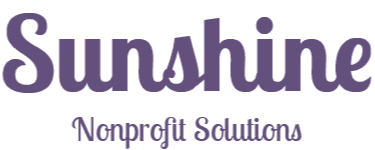
How to Ace Your Head Start Focus Area 2 Review

Preparing for a Focus Area 2 Federal Review
Preparing for a Focus Area 2 Federal Review can feel overwhelming, but with the right plan, you'll set your program up for success. This review is your opportunity to demonstrate how you meet the Head Start Performance Standards, achieve program goals, and create positive outcomes for children and their families.
Focus Area 2 reviews are on-site assessments that include document reviews, classroom observations, interviews, and file audits. These evaluations cover six core areas critical to Head Start programs:
- Program Management
- Education and Child Development Services
- Health Services
- Family and Community Engagement
- Fiscal Infrastructure
- Enrollment (ERSEA) Processes
Below you'll find tips and strategies designed to help you feel confident and prepared for your FA2 evaluation. Let's get started!
Start with the Basics
Begin your preparation by reviewing the official FA2 monitoring protocol and watching the OHS-provided guidance video with your team. These resources outline what federal reviewers will be looking for and establish a clear understanding of expectations.
To prepare thoroughly, consider creating scripts for interviews. These scripts can include specific details about your processes and results to help your team confidently answer questions.
Tell Your Story with Data
"Data tours" are an essential part of the FA2 review, showcasing your program's progress using visuals like pie charts, bar graphs, and infographics. These visualizations highlight your strengths and paint a clear picture of the impact you've had on children, families, and your community.
Data tours are a critical part of the Head Start Focus Area 2 Reviews, as they provide an in-depth look at the performance and impact of program components through the lens of various data types. Each service area must present specialized data to demonstrate both compliance with Head Start Performance Standards and evidence of continuous improvement.
Compliance data focuses on whether key benchmarks, such as full enrollment, the 85% daily average attendance rate, and 100% fulfillment of health requirements, are met.
Equally vital is the analysis of data used for program improvement, which examines how children's cognitive, physical, and social-emotional development is progressing. This data should be disaggregated by subgroups (e.g., gender, age, race/ethnicity, language status) and analyzed at multiple levels to identify patterns and inform targeted strategies.
Additionally, return-on-investment data is becoming increasingly important, as it evaluates the resources and time allocated to activities alongside their overall impact.
Focus Area Breakdown & Tips
1. Leadership, Governance, and Program Management
Kick off your review with confidence. The process starts with your leadership team introducing themselves. Ensure each individual delivers a polished 60-second introduction that highlights their role, experience, and leadership strengths.
Use clear visuals to demonstrate program achievements, such as progress toward your five-year program goals. Include charts that showcase outcomes in child development, family services, and staff recruitment. Empower your Board of Directors with program data and success stories so they feel confident during their interviews.
2. Education and Child Development Services
Federal reviewers will evaluate how you deliver high-quality early childhood education. Focus on the following key areas:
- School readiness goals and progress
- Classroom interactions and CLASS scores
- Curriculum implementation
- Teacher professional development
Analyze child outcomes data by classroom and subgroups. Identify patterns of success and areas for improvement. Support your insights with visuals like bar graphs and videos of classroom practices.
3. Health & Safety Services
Showcase how your program supports the health, mental health, oral health, and nutrition needs of children. Prepare visual summaries of key metrics, including:
- Outcomes for chronic conditions
- Preventative care percentages
- Classroom safety practices
Demonstrate your commitment to mental health and well-being for children, families, and staff. Describe your research-based social and emotional framework and staff training programs.
4. Family Engagement
Family support systems and engagement strategies are essential to success. Provide data on family outcomes using bar graphs and pie charts. Consider including photographs and quotes to bring your data to life.
An effective family services program should:
- Conduct thorough needs assessments
- Help families set achievable goals
- Measure progress incrementally
- Use research-based checklists
5. Fiscal Management
Your fiscal infrastructure is the backbone of your program's success. During the review, connect your budget decisions to program goals. Use visualizations to illustrate:
- Staff wages compared to community averages
- Return on investment
- Allocation of funds
6. ERSEA Compliance
Showcase your data and internal monitoring processes by:
- Presenting enrollment and attendance metrics
- Highlighting transportation solutions
- Sharing recruitment outcomes
Preparation Is Everything
A successful FA2 review starts with a confident, prepared team. Ensure all staff are ready to articulate achievements and showcase strengths with visual data.
If you need assistance, Sunshine Nonprofit Solutions offers:
- Training workshops
- Tailored strategies
- Personalized support
Book a free consultation today
Subscribe to our blog
About Dr. Cathleen Armstead
Dr. Armstead brings over 25 years of experience in Head Start programs, with an 88% grant writing success rate. She founded Sunshine Nonprofit Solutions to provide nonprofits with strategic planning, leadership development, and board training services.
Reach Out Today
Share your thoughts or requests to help us support your nonprofit's mission.
Let's collaborate on data-driven strategies for impactful growth and community benefit. Reach out to us now.
Contact Us
Office location
8948 Sw 224Th Terrace, Cutler Bay, Florida, 33190Give us a call
(407) 304-7689Send us an email
[email protected]